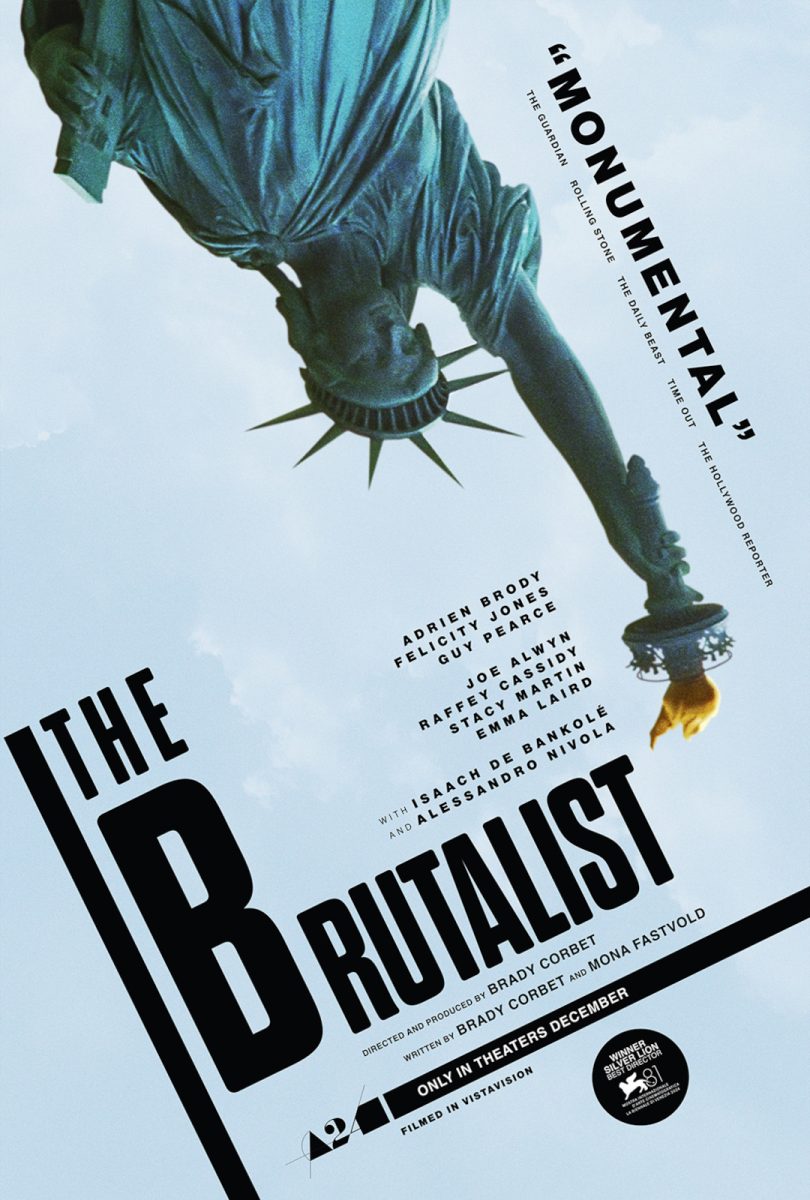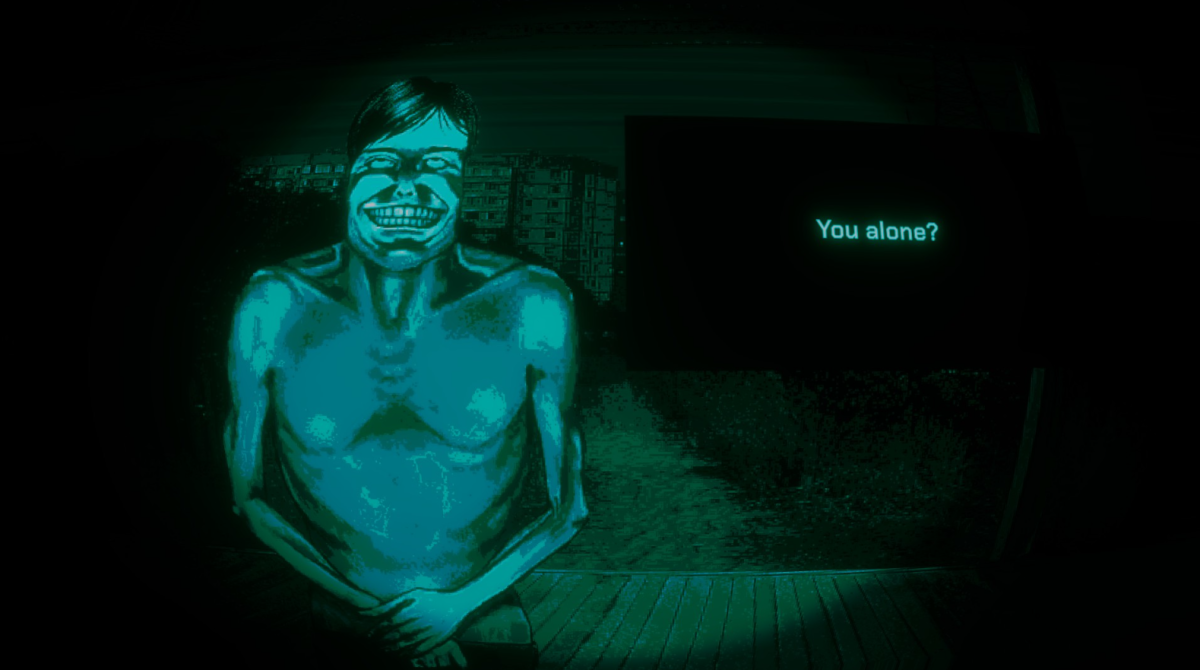White Industrialist Harry Lee Van Buren stares down the immigrant László Tóth and bitterly mutters, “We tolerate you.” This was a defining scene in Director Brady Corbet’s new film viscerally pissed me off because I could relate to László’s anger at being so openly disrespected. Being a second-generation American who has often felt alienated from my society, I understood László’s inner rage. I have citizenship by birth–nothing separates me from any other American except race. The color of my skin alone is enough for them to see me as an “other.”
“The Brutalist” follows László as he abandons his life as a renowned architect in postwar Europe in the 1940s and flees to America. There, he struggles to rebuild his life and reunite with his wife as a working-class immigrant. Opportunity arises after meeting the wealthy and powerful Harrison Lee Van Buren, yet László’s immigrant status–and his growing drug addiction–gradually complicate his potential for success.
The film’s title, “The Brutalist,” contains a clever double meaning. It refers to “brutalism,” the architectural style László’s work falls under, and to the brutal conditions American immigrants face in this nation. The film comments on the experiences of many immigrants and marginalized groups in America through the lens of events set over half a century ago. It’s a familiar experience for many immigrants and marginalized groups that creates a painful feeling of rejection from society, a feeling that remains all too familiar in our society today.
Many of the film’s gimmicks come off as pretentious and overblown. From the midway intermission to its return to the long-forgotten VistaVision format, only the more passionate cinephiles may share Corbet’s nostalgia for classic Hollywood. Still, many of Corbet’s shticks work in his favor. The film is a gargantuan work of filmmaking in nearly every aspect.
The VistaVision film format captures detail so vividly that it makes “The Brutalist” feel massive in scale compared to typical films today. The 15-minute intermission helped prevent it from feeling so exhausting considering the film’s 215-minute runtime. Considering the increasing number of 3-hour-plus films released in the past couple of years, it’s bizarre why more movies haven’t revived intermissions.
Although the film was hailed for its monumental-scaled cinematography and filmmaking, I found the cast’s performances to be the film’s strongest suit. The execution from the core cast is impactful and phenomenal. Each character serves as a monumental force clashing and syncing with the others on screen. Although Adrien Brody’s performance as László earned him a well-deserved Golden Globe win, it is his co-stars Felicity Jones (as László’s wife, Erzsébet) and Guy Pearce (as Harrison) that I found to be the true standouts.
Jones manages to be both vulnerable and in control. One moment I cringe in my seat watching the disease of her character consume her, but the next I am intimidated by the power she exerts over both her husband and Harrison. On the opposing end, Pearce is genuinely menacing in his volatile explosions of overwhelming emotion, and the presence he carries as a dominant force in the American economy.
Despite the strong performances and craftsmanship, “The Brutalist” sparked controversy for its use of artificial intelligence to modify the final cut. The film’s editor, Dávid Jancsó, told RedShark News AI was used in post-production to modify Brody and Jones’ Hungarian speech to sound more authentic. Additionally, generative AI was used in one sequence to produce images representing László’s architectural work. While AI in filmmaking is used as a human control tool like digital effects, the strive for perfection strips away much of the authenticity found in natural imperfection, ultimately diminishing the work’s impressiveness and awe.
My main criticism of this film is that its emphasis on spectacle causes it to lose focus on its intended message. The social commentary of “The Brutalist” becomes overshadowed by its elaborate aesthetics. As engrossing as the film’s spectacle is, the loss of focus results in a messy final act that should’ve been as tense, haunting and consequential as the tension of prior events builds it up to be.
There are several ways to evaluate “The Brutalist.” On one hand, you have a work looking to comment on an issue that plagues our American society. On the other, you have a gimmick movie wanting to reel in as big of an audience as it can. Can it be both? Maybe, but in the end, the film compromises its ugly, haunting truth to become more appealing to wider audiences. Much like the characters of “The Brutalist,” the film collapses from its own ambition. Its message fails to come off as bitingly as it deserves to be for the millions of marginalized Americans it represents. That’s really disappointing.
3.5/5








